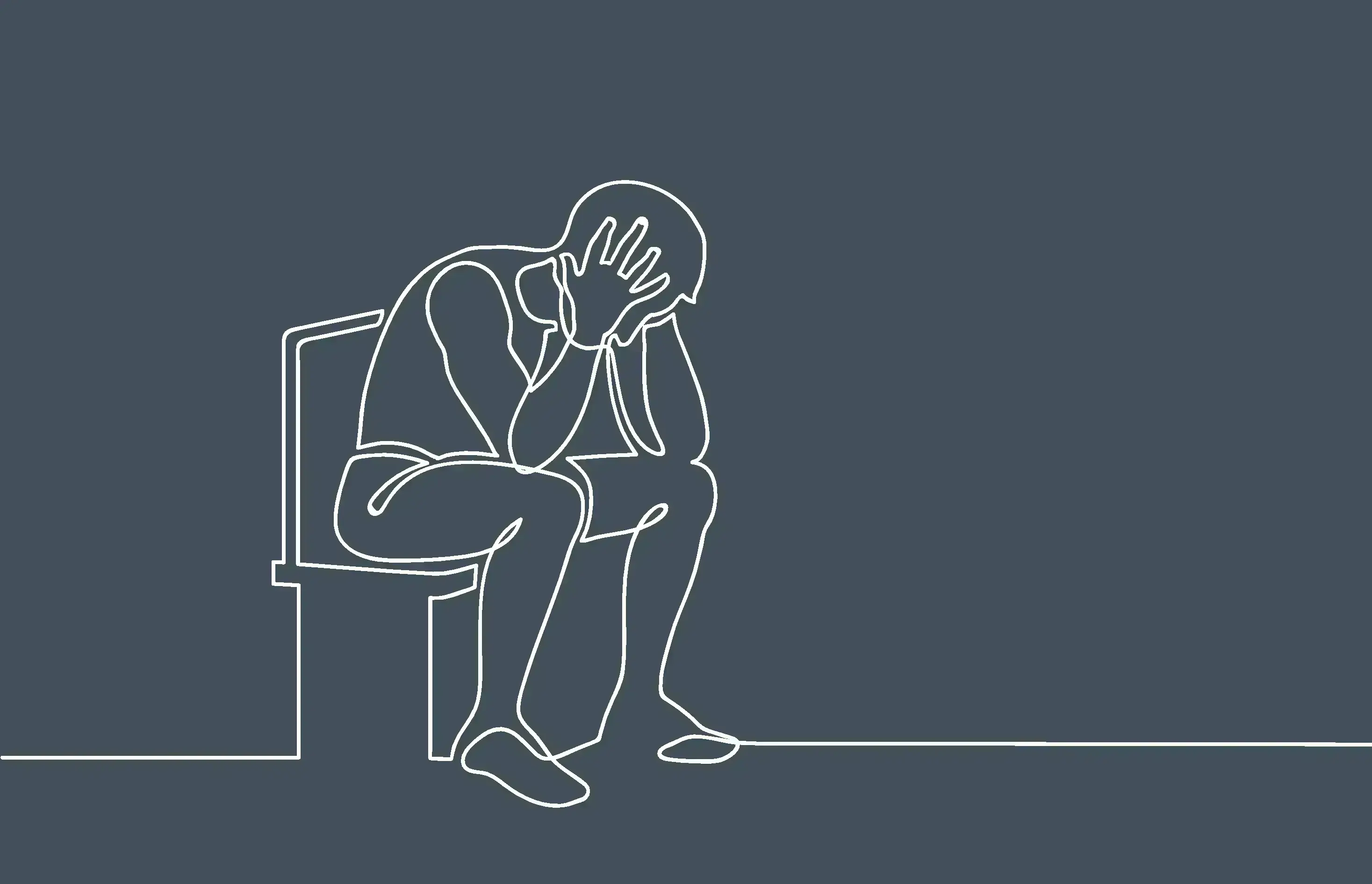Patients with severe major depressive disorder (MDD) may either experience loss of appetite and weight, and insomnia, or in contrast, increased appetite and weight, low energy, and hypersomnia. The former (typical MDD) is associated with higher cortisol levels and an overlap with mental disorder-linked genes. The latter (immunometabolic MDD) is associated with immunoinflammatory and metabolic dysregulation, and an overlap with obesity and metabolic dysregulation genes, explained an expert at WCP 2021.
중증 주요우울장애(MDD) 환자는 식욕 감퇴, 체중 감소, 불면증을 겪거나, 반대로 식욕 및 체중 증가, 에너지 저하, 과다수면증을 겪을 수 있습니다. 전자(전형적 MDD)의 경우 코르티솔 수치가 높고 정신 질환 관련 유전자가 중첩됩니다. 후자(면역대사성 MDD)의 경우 면역염증성 및 대사성 조절 장애와 관련이 있으며 비만 및 대사성 조절 장애 유전자와 중첩된다고 WCP 2021에서 한 전문가가 설명했습니다.
Major depressive disorder is heterogeneous
주요우울장애는 다양한 유형으로 발현됩니다
Insomnia and hypersomnia are both symptoms of major depressive disorder
불면증과 과다수면증은 모두 주요우울장애의 증상입니다
Many symptoms contribute to the concept of MDD, said Professor Brenda Penninx, Amsterdam UMC, Netherlands, with 257 symptom combinations leading to a diagnosis of MDD.1 Some symptoms are even in opposite directions, for example insomnia and hypersomnia.
네덜란드 암스테르담 UMC 브렌다 페닝크스(Brenda Penninx) 교수는 다양한 증상이 MDD 라는 개념을 구성하며, MDD로 진단되는 증상 조합이 257개나 된다고 설명했습니다.1 불면증과 과다수면증처럼 증상 중 일부는 서로 반대 양상을 나타내기도 합니다.
The heterogeneity of MDD is highlighted by differing responses to antidepressants.2 Antidepressants are effective, said Professor Penninx, but not for everyone. Finding the best treatment for a patient can be a process of trial and error.
MDD의 다양성은 항우울제에 대한 다양한 반응으로 드러납니다.2 항우울제는 효과가 있지만, 모든 환자에게 효과가 있는 것은 아니라고 페닝크스 교수는 말했습니다. 환자별로 최적의 치료법을 찾는 과정에서 시행착오를 겪을 수도 있습니다.
Three major patient subtypes can be identified
환자는 크게 세 가지 하위 유형으로 구분됩니다
The atypical subtype is characterized by increased appetite and weight, low energy, hypersomnia and leaden paralysis
비전형적 하위 유형은 식욕 및 체중 증가, 에너지 저하, 과다수면증, 사지의 무거운 마비감이라는 특징이 있습니다
A data-driven analysis of the symptoms of over 818 people with mild-to-severe recurrent MDD has revealed three different MDD subtypes of patient,3 said Professor Penninx.
페닝크스 교수의 설명에 따르면, 경도~중증의 MDD 재발 환자 818명의 증상에 대한 데이터 기반 분석을 통해 환자를 세 가지 하위 유형으로 분류하게 되었습니다.3
The three subtypes were identified among patients enrolled in The Netherlands Study of Depression and Anxiety study, for which Professor Penninx is the principal investigator and scientific director. They are:
페닝크스 교수가 총괄 연구원 및 과학 감독관으로 활동하는 네덜란드의 우울증 및 불안증 연구에 참여한 환자들을 통해 이 세 가지 하위 유형을 파악할 수 있었습니다. 각 하위 유형은 다음과 같습니다.
- Severely depressed patients who experience loss of appetite and weight, insomnia and suicidal thoughts, ie, typical MDD (∼50% of patients)
- Equally severely depressed patients who in contrast experience increased appetite and weight, low energy, hypersomnia and leaden paralysis ie, atypical MDD (∼25% of patients)
- Moderately depressed patients with a lower severity of the majority of symptoms (∼25% of patients)3
- 식욕 감퇴, 체중 감소, 불면증, 자살 사고 등의 증상을 겪는 중증 우울증 환자, 즉 전형적 MDD(~50%의 환자)
- 위와 동일하게 중증 우울증 환자이나 식욕 및 체중 증가, 에너지 저하, 과다수면증, 사지의 무거운 마비감 등의 반대 증상을 겪는 환자, 즉 비전형적 MDD(~25%의 환자)
- 증상 대부분이 중등도에 해당하는 중등도 우울증 환자(~25%의 환자)3
Typical vs atypical major depressive disorder
전형적 및 비전형적 주요우울장애
Typical and atypical MDD subtypes have different pathophysiologic and genetic associations
전형적 및 비전형적 MDD 유형은 병리생리학적 및 유전적 구성이 서로 다릅니다
The typical and atypical MDD subtypes are not only characterised by differing symptomatology but also by differing correlates, course of illness, and pathophysiologic and genetic associations,3 said Professor Penninx.
전형적 및 비전형적 MDD 유형은 종합적 증상뿐만 아니라 상관관계, 질환 과정, 병리생리학적 및 유전적 구성이 모두 다르다고 페닝크스 교수는 말합니다.3
Patients with the typical subtype were more likely to:
전형적 하위 유형은 다음과 같은 특성을 나타낼 가능성이 높습니다.
- Smoke3
- Experience early and later life trauma3
- Display more persistent anxiety and thoughts of suicidality over time4
- Have higher cortisol levels indicating hyperactivity of the hypothalamic-pituitary axis5
- Overlap with mental disorder-linked genes6
- 흡연3
- 유년기 또는 노년기 정신적 외상 경험3
- 시간의 경과에 따라 더 오랫동안 지속되는 불안증 및 자살 사고4
- 높은 코르티솔 수치 및 이에 따른 시상하부 뇌하수체 축 항진5
- 정신 질환 관련 유전자 중첩6
Patients with the atypical subtype were more often female3 and were more likely to have:
비전형적 하위 유형 환자는 여성인 경우가 많고3 다음과 같은 특성을 나타낼 가능성이 높습니다.
- An earlier onset of symptoms3
- Display a poor metabolic profile at baseline and follow-up4
- Have immunoinflammatory and metabolic dysregulation, and leptin and insulin resistance4,5
- Overlap with obesity and metabolic dysregulation genes6
- 증상 조기 발현3
- 진단 초기 및 추적 검사 시, 저하되어 있는 대사 프로파일4
- 면역염증성 및 대사성 조절 장애, 렙틴 및 인슐린 저항성4,5
- 비만 및 대사성 조절 장애 유전자 중첩6
Atypical MD has been designated immunometabolic MDD
비전형적 MD는 면역대사성 MDD라고 칭합니다
To reflect its immunoinflammatory and metabolic characteristics, the atypical subtype has been designated immunometabolic MDD.7
비전형적 하위 유형은 면역염증성 및 대사성 특성을 반영하여 면역대사성 MDD라는 명칭으로 일컫고 있습니다.7
The differing characteristics of typical and immunometabolic MDD suggest differences in their underlying etiology, said Professor Penninx.
전형적 MDD와 면역대사성 MDD의 서로 다른 특성은 곧 기저 병인의 차이를 의미한다고 페닝크스 교수는 말했습니다.
Implications of the immunometabolic subtype for personalized treatment
맞춤형 치료를 위한 면역대사성 하위 유형의 의미
Immunometabolic MDD appears to be linked to metabolic and somatic conditions indicative of a shift in energy balance from expenditure to accumulation,4 said Professor Penninx. It therefore forms an appropriate starting point for evaluation of personalized treatment strategies.
페닝크스 교수의 설명에 따르면, 면역대사성 MDD는 에너지 균형 상태가 소모에서 축적으로 전환되는 것을 의미하는 대사성 및 신체적 특성과 관련된 것으로 보입니다.4 이를 바탕으로 맞춤형 치료 전략을 판단하는 데 적절한 출발점을 찾을 수 있습니다.
Our correspondent’s highlights from the symposium are meant as a fair representation of the scientific content presented. The views and opinions expressed on this page do not necessarily reflect those of Lundbeck.




